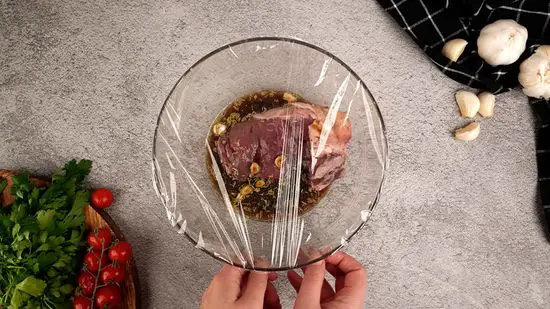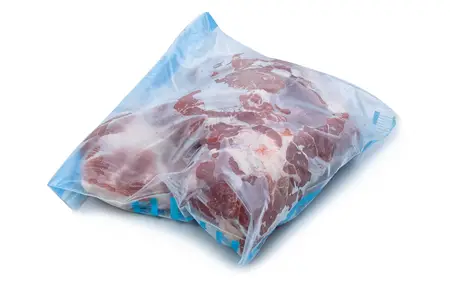How Long Do Cooked Fish Cakes Keep in the Fridge?
Fish cakes are a delicious and satisfying dish that can be eaten both as a main course or as a snack. They are usually made with chopped fish, mashed potatoes, and various seasonings, then formed into small patties that are fried until crispy on the outside and tender on the inside. However, just like any other cooked food, fish cakes need to be stored properly in order to remain fresh and safe for consumption. In this article, we will answer the age-old question: How long do cooked fish cakes keep in the fridge?
Introduction
Before we delve into the specifics of how long fish cakes last in the fridge, let’s first define what they are and why we need to store them properly. Fish cakes are a type of seafood-based dish that is popular in many countries around the world, including Thailand, Japan, England, and Scandinavia. They are typically made by combining minced or flaked fish with starch (usually potatoes), onions or scallions, eggs and seasoning.
When it comes to cooked food, it’s crucial to store leftovers correctly to prevent bacterial growth and prolong their shelf life. When cooked food is not stored properly at refrigeration temperatures (below 40°F), bacteria begin to multiply rapidly which can lead to spoilage and foodborne illness. Therefore, it’s important to follow specific guidelines when it comes to storing cooked fish cakes.
Factors that Affect Shelf Life of Cooked Fish Cakes
The shelf life of cooked fish cakes depends on several factors that affect their texture and taste over time. Here are some factors that you should consider when storing cooked fish cakes:
Temperature
Temperature is one of the most critical factors when it comes to storing cooked fish cakes. The ideal temperature range for storing fish cakes in the fridge is between 34°F and 40°F. However, it’s essential to use a food thermometer to ensure that the fridge is maintaining a safe temperature range. It’s crucial to note that every time you open the fridge, the temperature can rise for a short time, so it’s important not to store cooked fish cakes in the door shelves or near the fridge’s warmest areas.
Moisture Level
Moisture content contributes significantly to the longevity of cooked fish cakes. If they are too moist, they can spoil quicker and become mushy when reheated. In contrast, if they are too dry, they can become less flavorful and hard when reheated. Therefore reducing moisture in your cooked fish cakes by removing excess oil or water before storing them can help extend their shelf life.
Storage Containers
The type of container you use for storing cooked fish cakes also plays an important role in its longevity. The container should be air-tight and moisture-proof to keep them from becoming contaminated with bacteria or molds. Here are some storage container options that are suitable for cooked fish cakes:
– Glass containers with locking lids
– Airtight plastic containers with locking lids
– Ziplock bags (remove as much air as possible before closing)
It’s important to also ensure that there’s enough space in your container for accommodating your cooked fish cakes without overcrowding them as doing so will lead to an accumulation of heat which could spoil the food and also prevent them from touching each other.
Guidelines for Proper Storage of Cooked Fish Cakes
To make sure your cooked fish cakes stay fresh and safe for consumption here are some guidelines to follow:
Temperature
– Store cooked fish cakes at temperatures between 34°F and 40°F.
– Keep the thermometer inside just close to where you intend to store your fish cakes if you are not sure of the temperature of your fridge.
Moisture Level
– Reduce excess moisture by blotting excess fat and/or water with paper towels before storing.
Storage Containers
– Store cooked fish cakes in air-tight containers or Ziploc bags to prevent them from spoiling
Here are some common mistakes that you should avoid when storing food in your fridge:
– Storing your food while it’s still hot or warm as this can cause bacteria growth
– Overpacking your fridge to the extent that cold air cannot circulate
– Storing perishable foods in the door shelves where it’s warmer and the temperature is inconsistent
Signs That Cooked Fish Cakes Have Spoiled
It’s essential to know how to tell if your cooked fish cakes have gone bad. Here are warning signs that can help you identify spoiled cooked fish cakes:
– The smell of ammonia
– Discoloration or slimy texture on the surface
– Nauseous or sour smell
If any of these signs are present, it’s best to discard them immediately.
How Long Can Cooked Fish Cakes be Stored in the Fridge?
The shelf life of cooked fish cakes varies depending on whether they’re homemade or store-bought.
Store-Bought Fish Cakes
In general, store-bought cooked fish cakes can last 3-4 days in the refrigerator if they have been stored correctly. However, this is just a general guideline and it’s always best to check for any signs of spoilage before consuming refrigerated store-bought cooked fish.
Homemade Fish Cakes
Homemade cooked fish cakes tend to have a much shorter shelf life compared to store-bought ones. On average, they can last for 1 to 2 days in the fridge if stored correctly. To extend the shelf life of homemade cooked fish cakes, freeze them as soon as possible.
Tips on Reheating Cooked Fish Cakes Safely
Reheating cooked fish cakes is easy, and there are various ways to do it, but it’s important to use the appropriate temperature and method to prevent them from becoming overcooked or dry.
Preparing Leftover Stored Cooked Fish Cakes for Reheating
– Remove all the fish cakes from their storage containers
– Leave them at room temperature for about 10 -15 minutes
– Blot off any excess moisture with paper towels
Recommended Reheating Temperatures and Methods
– Oven: If you have leftover cooked fish cakes, baking them in an oven or toaster oven is an excellent option. Preheat your oven/toaster oven to 350°F then reheat your fish cake(s) for 10 -15 minutes or until the internal temperature reaches 165°F.
– Microwave: If you prefer quick reheating, then microwaving your leftover cooked fish cakes should do. Place your thawed cooked fish cakes on a microwave-safe dish and cover with a damp paper towel to prevent drying out. Heat for about one minute on high.
– Pan-frying: This option allows you to keep their crispiness while heating through and is also ideal if you want to reheat a large batch of fish cakes. Heat up oil in your pan over medium heat then place your reheated fish cakes into the hot oil and fry for about 3 minutes per side.
Tips for Avoiding Unpleasant Tastes and Textures While Reheating Pre-cooked Fish Cakes
– Do not overcook them repeatedly as it may cause a change in taste and texture
– Do not reheat more than once to prevent bacteria growth
– Add a little water or broth when microwaving to avoid drying out
Conclusion
Storing cooked fish cakes properly is crucial for maintaining their quality and freshness. Factors such as the storage temperature, moisture level, and container type can all affect their shelf life. Proper storage guidelines are key in preventing the waste of food and optimizing their longevity. By following these simple tips, you can keep your cooked fish cakes fresh and safe for consumption.
Frequently Asked Questions
How should I store my cooked fish cakes?
We recommend storing your cooked fish cakes in an airtight container in the fridge. This will prevent them from drying out and absorbing any unwanted odors.
How long do cooked fish cakes keep in the fridge?
Cooked fish cakes can last for up to three days in the refrigerator. It is important to make sure they are stored properly and kept at a consistent temperature throughout their storage time.
Can I freeze my cooked fish cakes?
Yes, you can freeze your cooked fish cakes. Make sure they have cooled completely first, then wrap each cake individually in plastic wrap or foil before placing them in a freezer bag or container. They can be stored in the freezer for up to three months.
What’s the best way to reheat my cooked fish cakes?
The best way to reheat your fish cakes is to place them in a preheated oven at 375°F for approximately 10-12 minutes or until heated through. You can also microwave them for about 30 seconds on high, but be careful not to overcook as this can dry them out.






